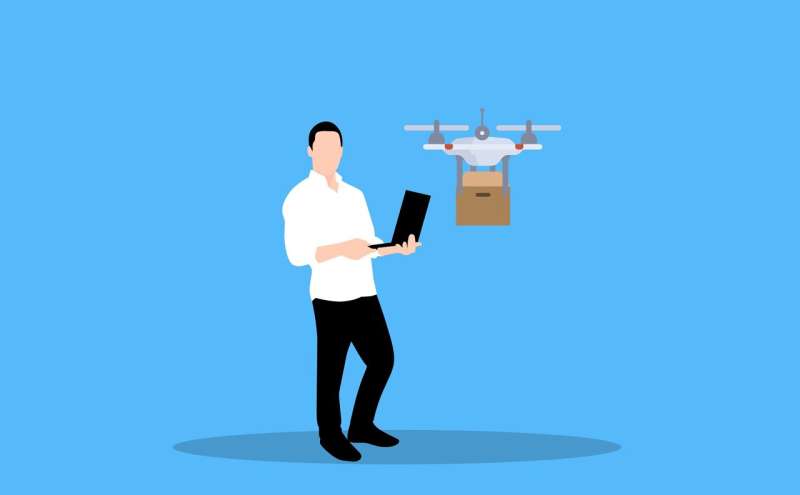The carbon footprint of 'delivering the goods' with robots and automated vehicles

In the last few years, delivery robots and drones have popped up around the U.S., occasionally rolling, walking or flying up to people's doorsteps to drop off packages. But one consideration that needs to be addressed before widely adopting autonomous technologies is their environmental impact. Now, researchers reporting in ACS' Environmental Science & Technology show that automating residential package transport doesn't influence the greenhouse gas footprint as much as the delivery van's size and type.
Recently, the COVID-19 pandemic boosted interest in automated transport technologies as a contactless way to help customers get their purchases. However, there hasn't been an assessment of how robots and automated vehicles impact the already energy-intensive process of transporting packages from local distribution centers to customers' front doors. So, Gregory Keoleian at the University of Michigan and colleagues wanted to see how automating this final stage with self-driving cargo vans and walking robots impacted the greenhouse gas emissions associated with each package compared to human delivery systems.
The researchers looked at 12 scenarios, ranging from a human-operated delivery process to a totally automated system, along a typical suburban route where one package is dropped off every half mile. In each scenario, they calculated the greenhouse gas emissions, or the carbon footprint, for each package delivered. To do this, they added up emissions data from production and lifetime operation for a commercial walking robot and different cargo vans, including human-driven and self-driving models, gasoline- and battery-powered models and two cargo sizes.
The results indicate that robots and vehicle automation account for a relatively small percentage (<20%) of a package's footprint. Instead, the delivery vehicle's size and fuel source had very large impacts on the overall greenhouse gas emissions. For instance, using a van with a gas engine nearly doubled the emissions per package compared to delivering with a battery-powered model. In addition, a larger cargo van, which could hold 180 packages, had approximately 50% greater greenhouse gas emissions per package than a van that held 80 packages. In this step toward understanding how automated methods stack up against human delivery, the researchers say a human driving a smaller, battery-powered cargo van has the lowest per package footprint of the methods they analyzed.
More information: Luyao Li et al, Life cycle greenhouse gas emissions for last-mile parcel delivery by automated vehicles and robots, Environmental Science & Technology (2021). DOI: 10.1021/acs.est.0c08213


















